Info
Subfamily: Danthonioideae
Genus etymology: Rytidosperma = "wrinkle seed" [Greek] refering to wrinkled larvae mistaken for seeds
Species etymology: biannulare = "two rings" [Latin] refering to the two bands of hairs on the lemma
Photosynthetic type: C3 (cool season)
Nativity: naturalized - intentional
First recorded in Hawaiʻi: 1937
Map
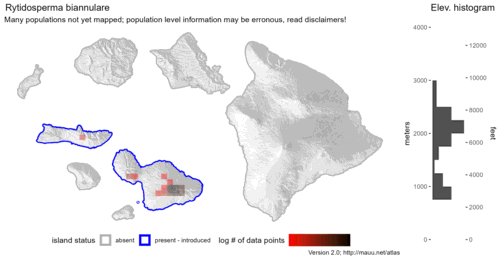

Inflorescence
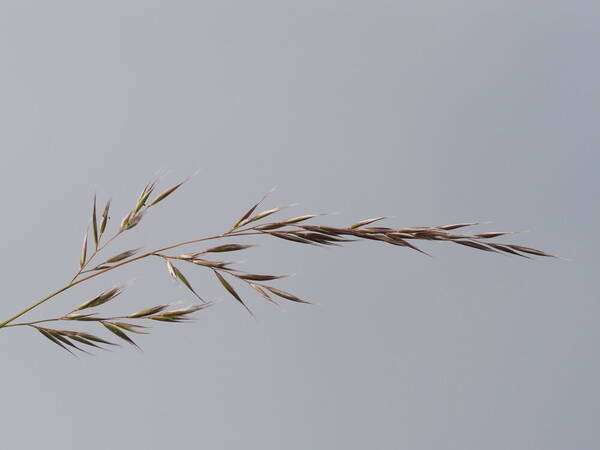
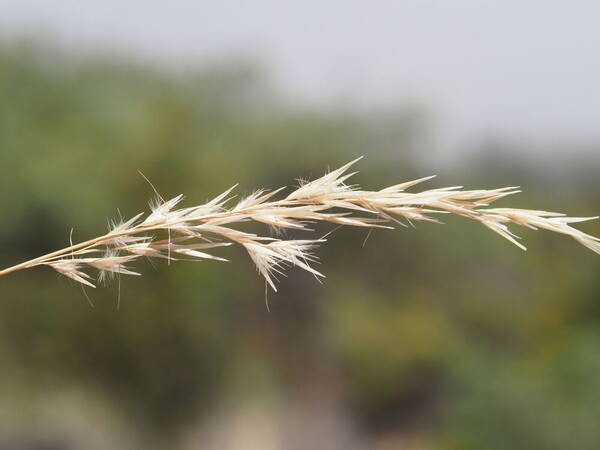


Spikelets
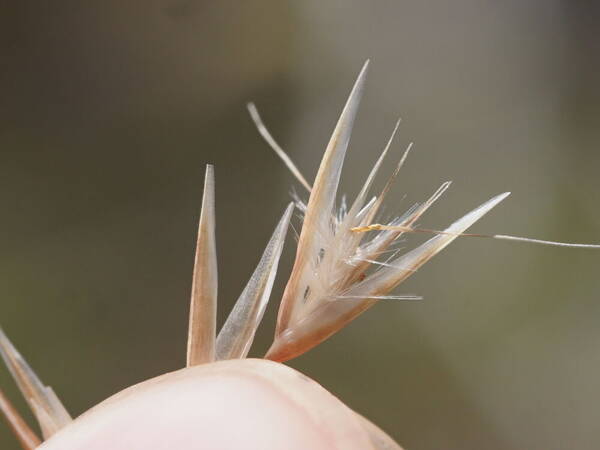
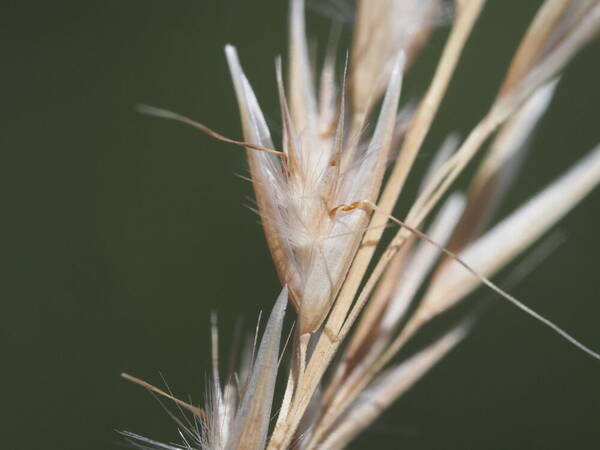
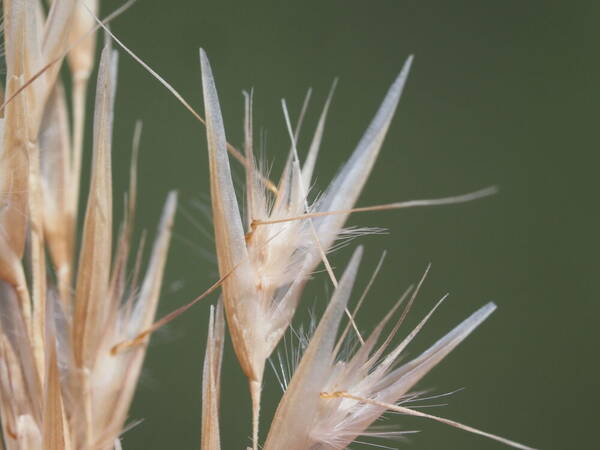
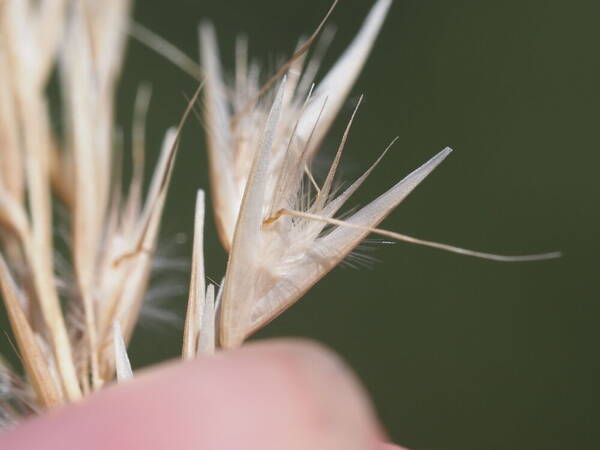
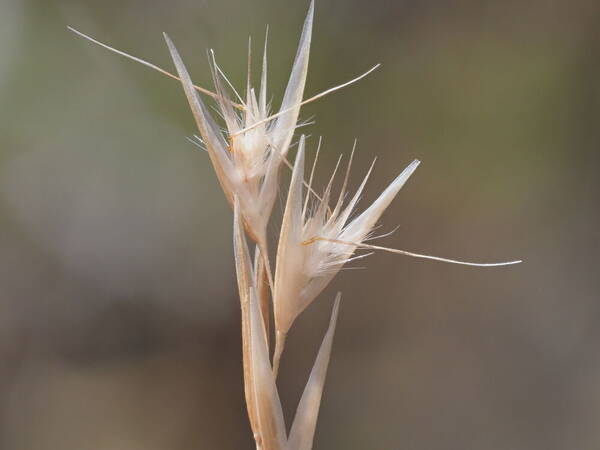
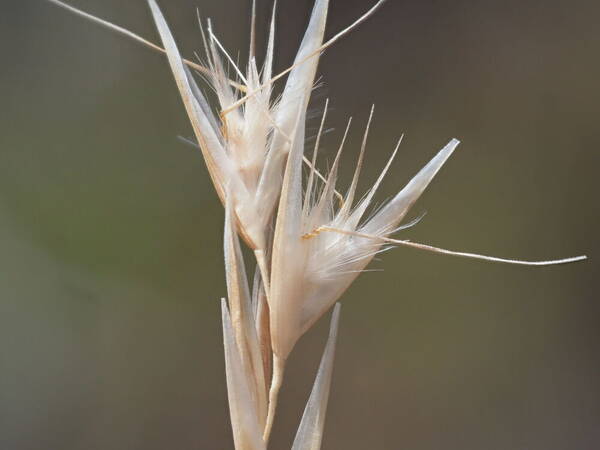
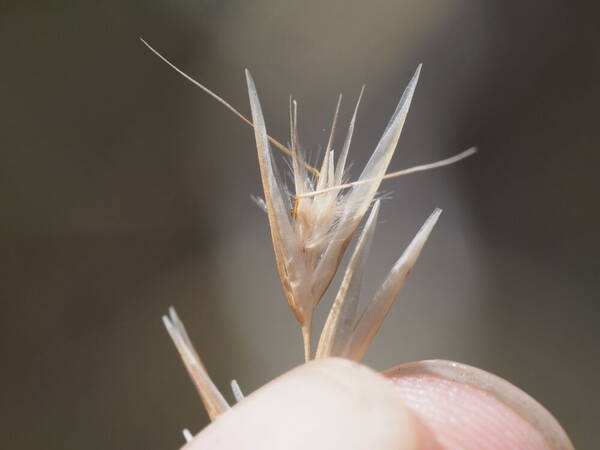
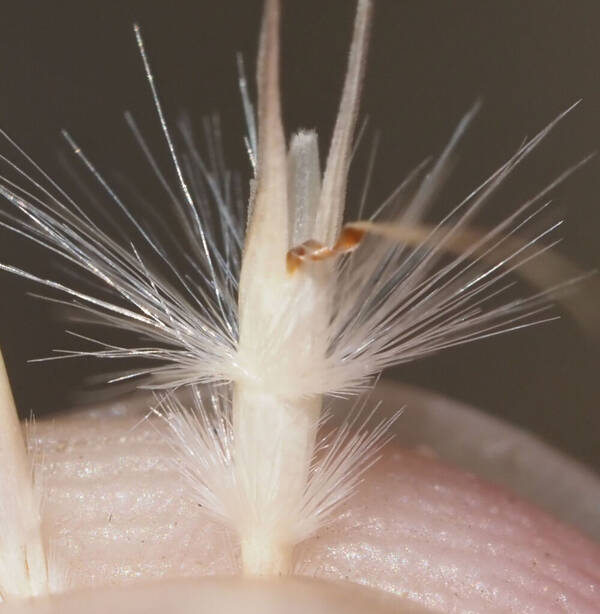
Collar
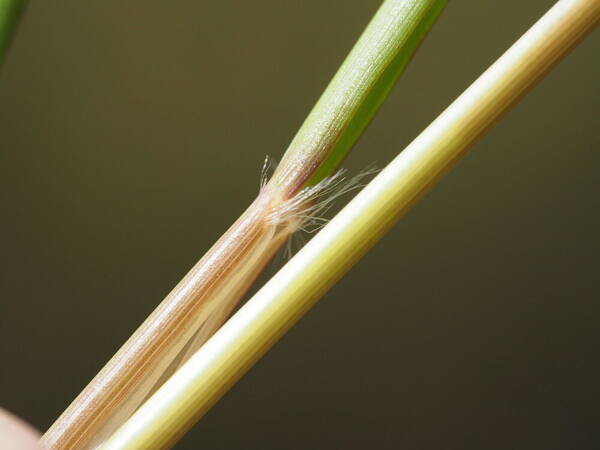
Description
Plants cespitose. Culms 30-85 cm, erect, branching intravaginal. Leaves mostly basal, exceeded by the culms, flag leaf blades usually reaching or exceeding the inflorescences; sheaths mostly glabrous, often purplish distally, with apical tufts of hairs sometimes present, hairs to 5 mm; ligules 0.3-0.5(1) mm; blades 30-40 cm long, to 5 mm wide, usually involute, margins, apices, and sometimes adaxial surfaces scabrous, young blades sparsely pilose, becoming glabrous at maturity. Inflorescences 10-20 cm, narrow, dense panicles; rachises and pedicels scabrous. Spikelets (7)10-15 mm, longer than the rachis internodes, with 6-7 florets; rachilla segments 0.3-0.5 mm. Glumes 7.6-11(13.2) mm, subequal, lanceolate, subacute; lower glumes 5-7(9)-veined; upper glumes 5-veined; calluses 0.5-0.7 mm, with marginal tufts of hairs reaching the lower lemma hairs; lemma bodies 1.8-2.4(2.8) mm, 7-9-veined, lower and upper rows of hairs dense, hairs of lower rows usually not or only just reaching the upper rows, sometimes ill-defined, hairs of upper rows clearly exceeding the base of the awn but exceeded by the lemma lobes, margins ciliate, other portions of the lemma with short scattered hairs, sometimes glabrous below the upper row of hairs; lobes 3.5-5(8.5) mm, aristate; awns 6-10(12.5) mm; paleas 2.5-4.6 mm, exceeding the lemma sinuses, emarginate, intercostal region sparsely hairy, margins usually long-hairy, veins ciliate; anthers 0.8-1.6 mm. Caryopses 1.2-1.9 mm long, 0.6-0.8 mm wide; embryos 0.5-0.8 mm; hila 0.3-0.6 mm. 2n = unknown.
(Description source: Barkworth, M.E., Capels, K.M., Long, S. & Piep, M.B. (eds.) 2003. Flora of North America, north of Mexico. Volume 25. Magnoliophyta: Commelinidae (in part): Poaceae, Part 2. Oxford University Press, New York. 783 pp. http://floranorthamerica.org/Rytidosperma_biannulare )